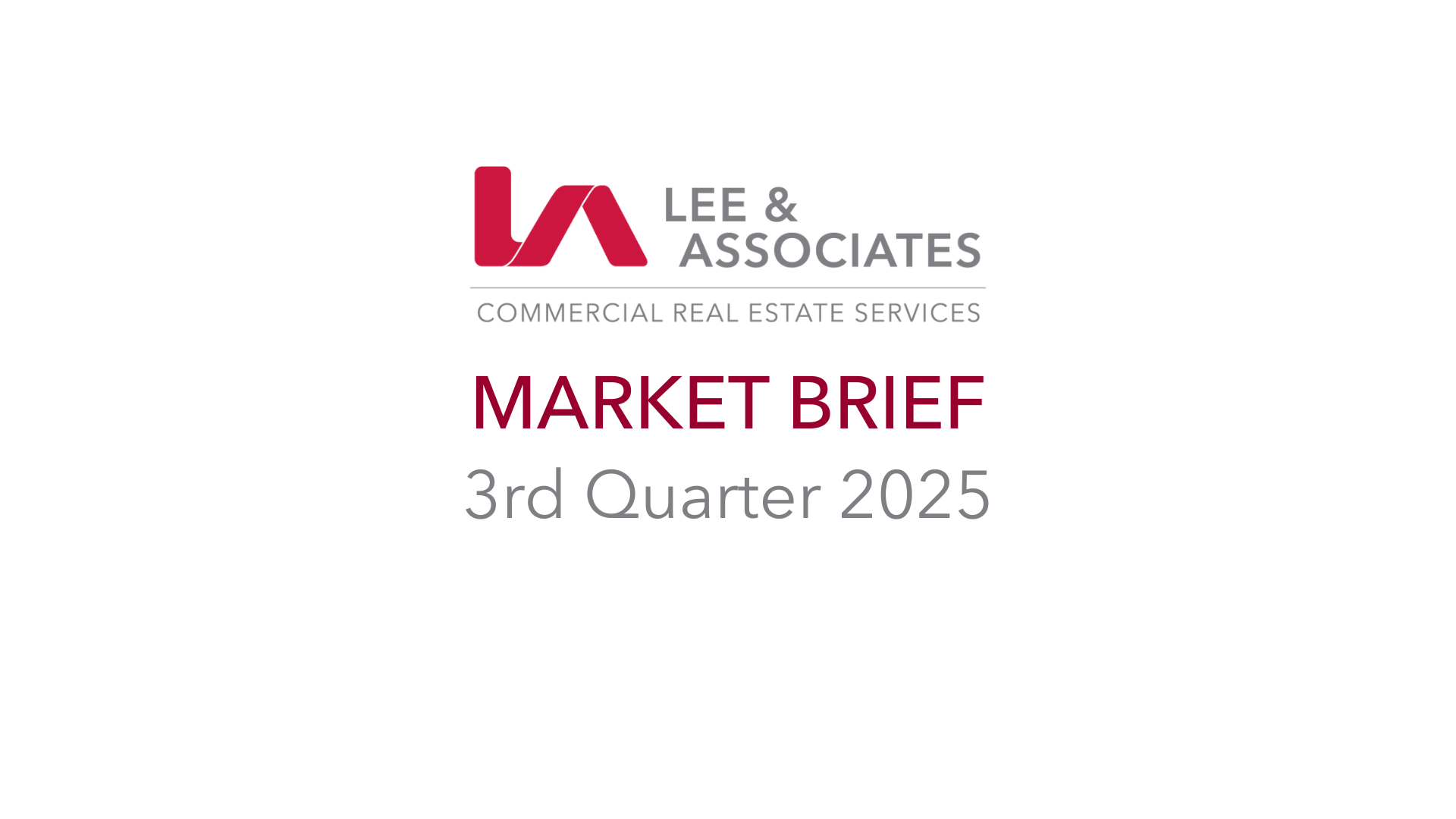DALLAS COMMERCIAL REAL ESTATE INDUSTRIAL MARKET REPORT | Q3 2025
October 9, 2025

DFW Industrial Market Holds Steady in Q3
The Dallas-Fort Worth (DFW) industrial market continued to demonstrate strength and stability in the third quarter of 2025, maintaining its reputation as a cornerstone of U.S. logistics and distribution. Supported by steady tenant demand, active construction, and consistent investor confidence, the Dallas Commercial Real Estate market remains one of the nation’s most dynamic and competitive industrial sectors.
Vacancy and Absorption: Balanced Market Conditions
Vacancy held steady at 9.5%, a modest improvement from last quarter’s 9.7%, indicating the market’s ability to efficiently absorb new supply even amid elevated deliveries. Over the past twelve months, net absorption totaled 21.8 million square feet, signaling that tenant demand remains solid as the post-pandemic expansion transitions into a more sustainable phase. In Q3 alone, 4 million square feet were absorbed, led by continued leasing momentum in the North Fort Worth/Alliance and South Dallas submarkets—two areas that continue to attract logistics and distribution users seeking modern, large-format space.
While absorption levels have normalized from the record highs of 2021 and 2022, occupier demand remains diversified across sectors such as e-commerce, third-party logistics, manufacturing, and consumer goods distribution. Together, these industries continue to drive long-term growth for Dallas Commercial Real Estate, reinforcing the region’s position as a critical distribution gateway for the central United States.
Development and Deliveries: A Robust Pipeline
Developers remain confident in the DFW industrial story. More than 34 million square feet of industrial space is currently under construction, ranking the metro among the top three development markets in the country. Notable ongoing projects include Amazon’s 1.7 million-square-foot distribution center in Cleburne, Hillwood’s Alliance Westport 14 in North Fort Worth, and Trammell Crow Company’s Passport Park West 6 near DFW Airport. Each reflects the scale and confidence with which major developers continue to invest in the market’s long-term logistics potential.
Despite elevated construction levels, new deliveries have moderated to 3.2 million square feet this quarter, allowing supply to realign with demand. This balance is expected to support stable vacancy rates heading into 2026, while continued tenant expansions across the metro are likely to absorb upcoming completions.
Rents and Pricing: Strength in Values
The average asking rent for industrial space across the metroplex held firm at $8.96 per square foot NNN, with certain high-demand submarkets such as South Stemmons and Northeast Dallas commanding rates above $10 per square foot. Meanwhile, average sales pricing climbed to $129 per square foot, reflecting investor confidence and the continued appeal of DFW assets for institutional buyers seeking durable income streams.
Leasing activity remained strong, totaling 14.5 million square feet for the quarter. Notable leases included VM Innovations’ 416,000-square-foot commitment in South Dallas and Modine’s 683,000-square-foot lease in the Great Southwest submarket—each demonstrating the sustained appetite for modern, well-located industrial product with efficient highway and rail access.
Investment Climate: Sustained Momentum
Total industrial sales volume reached $748 million in Q3 2025, marking a 30% increase from the same period last year. Institutional investors continue to favor Dallas Commercial Real Estate for its liquidity, scalability, and proven rent growth potential. Capital remains active across both core and value-add strategies, while private investors are increasingly drawn to secondary submarkets offering lower entry pricing but strong upside potential.
The DFW market’s appeal is further reinforced by its employment base, which continues to expand in logistics, manufacturing, and advanced distribution roles. This steady job growth supports both industrial demand and the broader regional economy, reinforcing the market’s fundamentals.
Infrastructure and Long-Term Outlook
Ongoing infrastructure projects—such as the expansion of Interstate 35W, improvements to State Highway 121, and continued investment around DFW International Airport—are further enhancing the region’s accessibility. These upgrades are expected to sustain long-term competitiveness by reducing transportation bottlenecks and attracting new corporate occupiers seeking efficient regional connectivity.
As 2025 draws to a close, the Dallas-Fort Worth industrial market shows no signs of slowing. With vacancy rates stabilizing, rental rates holding strong, and a healthy construction pipeline, the fundamentals point toward another year of measured yet confident growth. Market participants remain optimistic that the area’s central location, infrastructure investments, and diversified tenant base will sustain momentum into 2026.
In summary, Dallas Commercial Real Estate continues to exhibit the core strengths that have made it a national leader: strategic logistics positioning, resilient tenant demand, and disciplined development. Together, these factors ensure that the DFW industrial sector remains one of the most reliable, investment-worthy, and forward-looking markets in the country.
